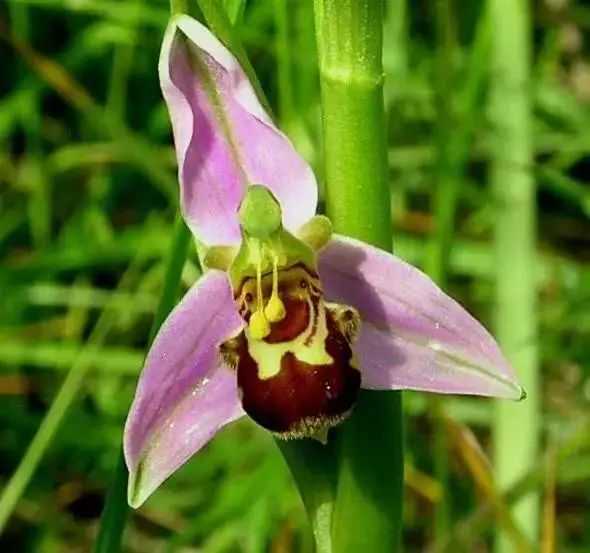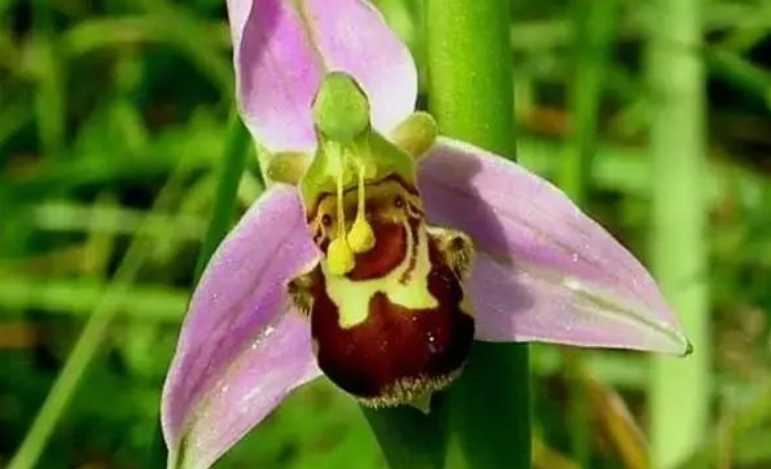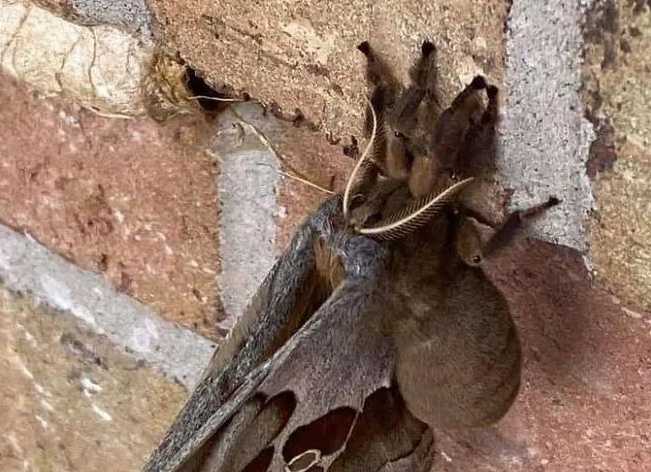The Fascinating Bee Orchid: Nature's Master of Deception
The Bee Orchid (Ophrys apifera) has long amazed botanists with its uncanny mimicry of female bees, a survival strategy that blurs the line between plant and animal. Native to Europe and parts of North Africa, this orchid thrives in grasslands, meadows, and woodland edges, where it relies on insect trickery to reproduce.

Source: Images from the Internet, if there is any infringement, please contact the removal of
A Floral Chameleon in Bloom
The Bee Orchid's flower is a masterpiece of evolutionary design: its lower lip (labellum) features fuzzy yellow and brown markings, mimicking the body of a female bee, while two lateral petals arch like wings. The resemblance is so precise that male bees attempt to mate with the flower (a behavior called pseudocopulation), inadvertently transferring pollen in the process. Each flower, about 2–3 centimeters across, emerges from a slender stem topped by lanceolate leaves. The plant grows 15–40 centimeters tall, blooming from late spring to early summer, and often forms small colonies in sunny spots.
Ecology and Conservation Challenges
This orchid's survival hinges on a specific pollinator: the mining bee (Andrena nigroaenea), which alone is fooled by its mimicry. Once pollinated, the plant produces a capsule of tiny seeds that disperse by wind. However, habitat loss from agriculture and urbanization threatens wild populations, with the species listed as vulnerable in some regions. Conservationists advocate for meadow restoration and pesticide reduction to protect both the orchid and its pollinators. As a symbol of nature's ingenuity, the Bee Orchid serves as a living testament to the intricate web of relationships in ecosystems—and a reminder of the fragility of such evolutionary wonders.
-------- END --------






